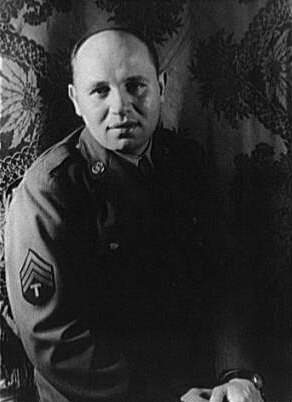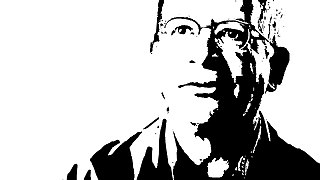
Charles Henry Alston was an American painter, sculptor, illustrator, muralist and teacher who lived and worked in the New York City neighborhood of Harlem. Alston was active in the Harlem Renaissance; Alston was the first African-American supervisor for the Works Progress Administration's Federal Art Project. Alston designed and painted murals at the Harlem Hospital and the Golden State Mutual Life Insurance Building. In 1990, Alston's bust of Martin Luther King Jr. became the first image of an African American displayed at the White House.

Romare Bearden was an American artist, author, and songwriter. He worked with many types of media including cartoons, oils, and collages. Born in Charlotte, North Carolina, Bearden grew up in New York City and Pittsburgh, Pennsylvania, and graduated from New York University in 1935.

Hale Aspacio Woodruff was an American artist known for his murals, paintings, and prints.

Charles Wilbert White, Jr. was an American artist known for his chronicling of African American related subjects in paintings, drawings, lithographs, and murals. White's lifelong commitment to chronicling the triumphs and struggles of his community in representational form cemented him as one of the most well-known artists in African American art history.

Norman Wilfred Lewis was an American painter, scholar, and teacher. Lewis, who was African-American and of Bermudian descent, was associated with abstract expressionism, and used representational strategies to focus on black urban life and his community's struggles.
Golden State Mutual Life Insurance Company, was once the largest black-owned insurance company in the western United States, founded by William Nickerson Jr. with the assistance of Norman Oliver Houston and George Allen Beavers Jr.
Gale Fulton Ross is an African-American visual artist who lives in Sarasota, Florida. Primarily a painter, she also practices portraiture, printmaking, and sculpture.

Spiral was a collective of African-American artists initially formed by Romare Bearden, Charles Alston, Norman Lewis, and Hale Woodruff on July 5, 1963. It has since become the name of an exhibition, Spiral: Perspectives on an African-American Art Collective.

Senga Nengudi is an African-American visual artist and curator. She is best known for her abstract sculptures that combine found objects and choreographed performance. She is part of a group of African-American avant-garde artists working in New York City and Los Angeles, from the 1960s and onward.
The Barnett-Aden Gallery was an art gallery in Washington D.C., founded by James V. Herring and Alonzo J. Aden, who were associated with Howard University's art department and gallery. The Barnett-Aden Gallery is recognized as the first successful Black-owned private art gallery in the United States, showcasing numerous collectible artists and becoming an important, racially integrated part of the artistic and social worlds of 1940s and 1950s Washington, D.C.
Dale Brockman Davis is a Los Angeles–based African-American artist, gallerist and educator best known for his assemblage sculpture and ceramic work that addresses themes of African American history and music, especially jazz. Along with his brother, artist Alonzo Davis, he co-founded Brockman Gallery in Leimert Park. Through the gallery and his broader community work, Davis became an important promoter of African-American artists in Los Angeles.
William Etienne "Bill" Pajaud was an African-American artist, primarily working in watercolor, known for his paintings exploring themes of jazz. He was born in New Orleans, Louisiana, and died in Los Angeles, California, on June 16, 2015, at the age of 89. He was the curator of the Golden State Mutual Life Insurance Fine Art Collection.
Eileen Abdulrashid is an American artist and craftsperson who is known for her work in enamel on copper.
Jonathan Lyndon Chase is an American visual artist. Chase's paintings and drawings focus primarily on queer black bodies in mundane, everyday spaces. Chase lives and works in Philadelphia, Pennsylvania.
Gloria Racine Bohanon was an American visual artist and educator based in Los Angeles, California. She was born in Atlanta, Georgia. She received a BA in Art Education and an MA in Art Education from Wayne State. She also studied at Otis College of Art and Design in 1973. She was an active member of the Los Angeles contemporary art scene in the 1970s. As a professor at Los Angeles Community College, she organized "Black Culture Week" in 1974. She taught design, painting, printmaking, and served as chair of the Arts Department while there. She was the director of ADAPT, an organization for disabled students while at LACC.

Frank Stewart is an African-American photographer based in New York. He is best known for photographing prominent Jazz musicians.

The Cinque Gallery (1969–2004) was co-founded by artists Romare Bearden, Ernest Crichlow, and Norman Lewis as an outgrowth of the Black power movement to "provide a place where the works of unknown, and neglected artists of talent …" — primarily Black artists — "would not only be shown but nurtured and developed". "Relying on a series of volunteers, Cinque hosted solo, group, and touring exhibitions," and sponsored an artist-in-residence program, which was inaugurated with collagist Nanette Carter.
Dan Concholar was an American painter and arts organizer. Educated under Charles White at the Otis Art Institute, he was active in the Los Angeles scene in the 1970s and in New York City in the 1980s. His work was included in the "Dig This!: Art and Black Los Angeles 1960–1980" at the Hammer Museum in Los Angeles which travelled to MoMA P.S.1 in New York City in 2012.

Joe Ray is an American artist based in Los Angeles. His work has moved between abstraction and representation and mediums including painting, sculpture, performance art and photography. He began his career in the early 1960s and belonged to several notable art communities in Los Angeles, including the Light and Space movement; early cast-resin sculptors, including Larry Bell; and the influential 1970s African-American collective, Studio Z, of which he was a founding member with artists such as David Hammons, Senga Nengudi and Houston Conwill. Critic Catherine Wagley described Ray as "an artist far more committed to understanding all kinds of light and space than to any specific material or strategy"—a tendency that she and others have suggested led to his being under-recognized.
Evita Tezeno is an American artist currently based in Dallas, Texas. She works in collage art, employing patterned hand-painted papers and found objects. Tezeno's work is influenced by modernists including Romare Bearden, and is characterized by depictions of scenes from her life, family, and childhood memories in South Texas. Her work aims to present a cohesive portrayal of Black America, drawing inspiration from artists such as Elizabeth Catlett and William H. Johnson. In 2012, she was awarded the Elizabeth Catlett Printmaking Award.










